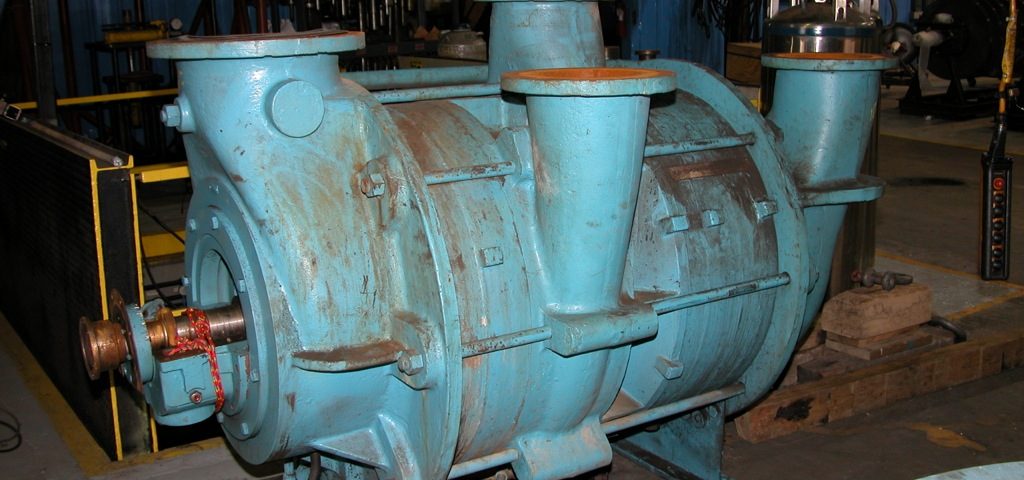
Pump Flow Pulsation – One of the Top Six Pump Vibration Problems
April 6, 2017
Misalignment of the Pump Shaft – One of the Top Six Pump Vibration Problems
May 26, 2017As part of our series on the top 6 pump vibration problems, we would like to focus on bent pump shafts. A bent pump shaft can occur as the result of damage during operation, rigging, improper configuration, or even shipping. There are straightening methods that can be properly applied to salvage damaged pump shafting, although they are not possible in all scenarios. Due to the complicated variables surrounding pump shaft bending, correction is just as much an art as it is a science. Bent pump shafts should be evaluated and repairs made on a case-by-case basis.
The role of the pump shaft
A centrifugal pump operates with a shaft mounted rotating impeller inside a housing that imparts energy to move the fluid. The pumps utilize centrifugal force to increase the velocity of the fluid as it passes through the impeller and exits the valve. This action converts torque on the shaft into kinetic energy by acceleration of the fluid to a higher velocity and pressure.
How bent shafts occur
There are many factors that can lead to a bent shaft. Following are some of the most common:
- Mechanical overload – caused by damage during rigging or improper handling, impact during operation, or machine misalignment
- Internal stress relief – caused by vibration during shipping, improper material handling, or elevated temperatures in operation
- Assembly stack-up stresses – caused by heavy shrink fits with mating components such as a turbine wheel
Mechanical action of the pump shaft and impeller is a vibration issue that can cause a bent pump shaft in vertical pump motors. These pumps contain long, thin shafts that are more susceptible to twisting and bending. To prevent this, they may come with guide bearings at intervals along the casing for added stability. Any variances in the clearance of the guide bearings can cause the pump shaft to move and eventually bend, especially on very deep pump applications.
The best pump shaft straightening method?
There is no simple answer to this question. A successful repair is dependent on several interrelated factors meaning that a successful method in one case may be unsuited to another. Generally speaking, the best method is the one that requires the fewest corrections to obtain the required straightness, or the one that delivers the least amount of stress to the shaft. Determining the best course of action for an application requires experience and knowledge related to these types of repairs.
Requirements for a successful repair
When faced with the prospect of equipment downtime, it can be tempting to jump into a repair process before completely understanding the cause of the problem. It’s important to take the time to gain a clear understanding of what lead to the bent shaft and the consequences of various repair methods. A successful bent shaft repair is sometimes a complicated activity that could require more than one procedure to achieve the desired result. Some of the most common methods of shaft straightening include mechanical shaft straightening, spot heat shaft straightening, peening shaft straightening, and opposed heating and cooling shaft straightening.
The skilled technicians at Houston Dynamic Service can identify, assess repair options, and correct many forms of bent pump shafts. Early detection of the problem can even provide significant savings in repair expenses and minimization of lost production time. Call HDS today for a pump analysis to discover and resolve problems that may be keeping your equipment from optimal performance.


